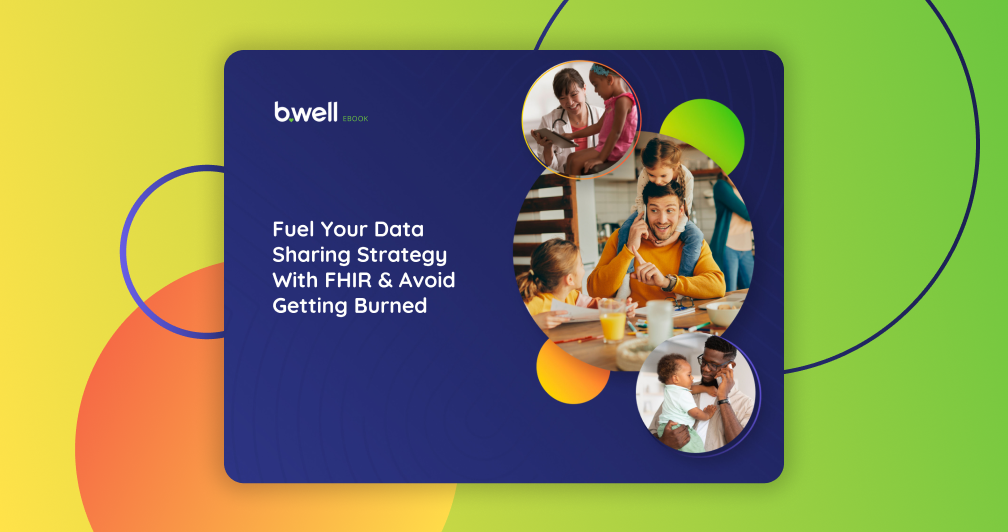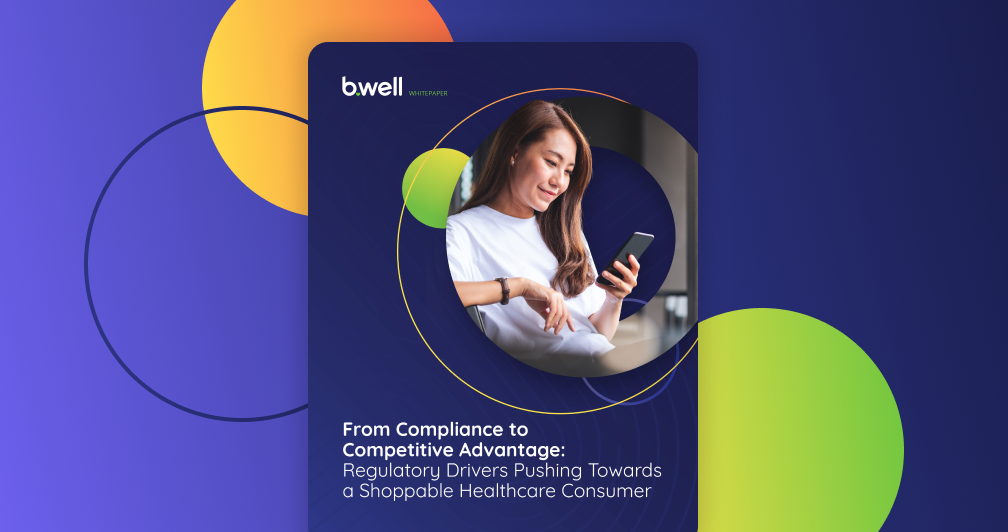b.well Joins CMS Panel in Tallying Wins & Predictions
As healthcare providers continue to face challenges in exchanging health information electronically with patients and with each other, it’s hoped that open application programming interfaces (APIs) that use the Fast Healthcare Information Resources (FHIR) standard will help solve the problem through healthcare interoperability. To review how the industry is progressing with FHIR, in July the Centers for Medicare and Medicaid Services (CMS) convened a panel of experts.
Part of the HL7 FHIR Connectathon, the panel was moderated by Dr. Bobby Saxon, Deputy Director (Deputy CIO) for the Office of Information Technology at CMS. The other participants included Heather Kennedy, Principal Architect at Humana, providing the payer perspective, Nitu Kashyap, MD, Associate Chief Medical Information Officer at Yale New Haven Health, who shared the perspective of provider organizations and Kristen Valdes, CEO and founder of b.well Connected Health to weigh in on behalf of app developers and patients.
According to the panel, the bottom line is this: Real-world use of FHIR is still in an early stage but spreading fast and delivering meaningful results for healthcare stakeholders. It’s time for all parties to dive in and adopt FHIR-based APIs.
What is FHIR?
By the end of this year, electronic health record (EHR) systems certified for use in CMS incentive programs must include FHIR-based APIs to facilitate patients’ access to their records. But that doesn’t mean that all consumers will have access to portals that allow them to download their data through these APIs. Moreover, the speakers said, providers, payers and third-party app developers need more organizations to jump on the bandwagon before they can take full advantage of FHIR APIs to access and exchange EHR data.
In essence, FHIR uses standardized web URLs to represent medical concepts such as diagnoses, medications and allergies. This method allows the exchange of discrete data in real-time; by contrast, most healthcare interoperability between different EHRs today consists of the exchange of lengthy documents that doctors use to search for the information they need. FHIR APIs also enable third party apps to pull personal health data out of EHRs with the consent of patients.
Kristen said FHIR can help deliver what consumers want from the healthcare system. Patients want their doctors to have real-time access to all of their data at the point of care, she said, and this access is also vital to population health management and value-based care.
“FHIR enables us to be able to use data in order to proactively communicate and reach out,” she discussed. “And I think that serves the entire community, whether you’re an insurance carrier, a provider, or a consumer-facing application trying to add value to a consumer’s life.”
Dr. Kashyap said Yale New Haven Health is interested in FHIR partly because it can support clinical decision support and reduce clinician burnout.
Health insurers are also embracing FHIR. Kennedy said that as FHIR-based APIs start to be used in patient care, Humana is also turning attention to FHIR’s potential use in managing population health and addressing social determinants of health.
“As we’re seeing these use cases [in the care of individuals] mature and become adopted, we’re starting to see the added value,” she said. “But we can’t do it if the whole community is not participating. So the more payers we can get on board, the more providers we can get on board, and third-party applications that are being creative in publishing solutions, the more that this community benefits.”
Information Blocking?
But these parties are not necessarily working together to deploy FHIR in beneficial ways. Despite the information blocking provisions of the 21st Century Cures Act, Kristen said, some healthcare systems are using “scare tactics” to warn consumers away from third party applications that can connect them with their EHR data via portals that use FHIR APIs.
She recommended that the Office of the National Coordinator for Health IT (ONC) revise its information blocking FAQs to discourage healthcare organizations from doing this. In addition, she urged software developers to adopt the CARIN Alliance code of conduct, which addresses the informed consent of consumers and the security and privacy of their data. This has been an increasing concern because third-party digital health apps are not covered by HIPAA.
Kristen is a board member of the CARIN Alliance, a 6-year-old, multi-sector collaborative working to develop consumer-directed health information exchange. Its members include representatives of consumers, HIPAA-covered entities and HIPAA non-covered entities such as digital health companies and data exchange networks. CARIN’s code of conduct is a set of consensus principles that promote the ability for consumers and their authorized caregivers to gain electronic access to their health information via open APIs, including those based on FHIR.
Redundant logons to portals
Kristen also examined the current reliance on patient portals, which consumers must log onto multiple times to obtain records from each of their healthcare providers.
“We’re requiring people to log in and authenticate over and over again. If health information exchanges and networks would adopt FHIR, in addition to clinical summary documents, and really enforce the patient right of access, we could allow people to use a standard authentication method to verify who they are and not have the need for all of these portals.”
The CARIN Alliance is working on a federated digital ID credential that consumers can use to access provider and payer information, Kristen said. An individual who has this unique credential will not have to re-identify themselves each time they seek their health records or visit a physician or a hospital. The API Gateway accessed by the credential would control the use of FHIR APIs. Humana is participating in a pilot of this approach, Kennedy said.
One advantage of FHIR in the consumer space is that it can provide patients with specific data, not just text reports. This can be valuable because it can allow consumers to correct errors, some of which could be life threatening, Kristen noted. “That war is to be won by moving to FHIR,” she said. “We need more payers and providers to open up FHIR APIs on the [patient] access front, not just the data side.”
Kashyap said she’d like to see FHIR used to facilitate “bulk data exchange” for use in population health management. “We need a lot of data to move from a visit-by-visit care to in-between visit care. And the current healthcare interoperability systems all rely on some level of contact [with the healthcare system] to pull information. I’d love to see us going away from that modality and doing more holistic care at a large population level rather than one point in care at a time, one patient at a time.”
The Healthcare Interoperability Gold Standard
Humana regards FHIR as the “gold standard” of interoperability, Kennedy said, because it allows real-time data exchange. Prior authorization – a much-maligned standard requiring providers to get approval from health plans before prescribing a medication or providing a service to patients – is a good use case for FHIR because it could streamline and speed up the process, she said.
A handful of other payers are also enabling FHIR-based prior authorization, Kashyap said. However, until all plans do it, she said, there will be “growing pains” as healthcare organizations cope with using traditional methods of prior authorization alongside the automated FHIR-based approach.
Kristen concluded, “I think FHIR, from a data-sharing perspective, has come so far. We obviously have a long way to go. But I believe that the real war to be won is going to be in [patient] access. It’s exciting to hear organizations like Humana getting ahead of the market and thinking in advance around how to make that consumer healthcare journey simpler.
“What all of the research shows is that consumers really want two things out of the health care delivery system: Be there for me when I need you and tell me when there’s something I need to do. And to accomplish both of those goals we really need the data and real-time information that FHIR can deliver.”
If you’d like to dive in more deeply on FHIR, you can watch the video of the full hour-long panel discussion.


